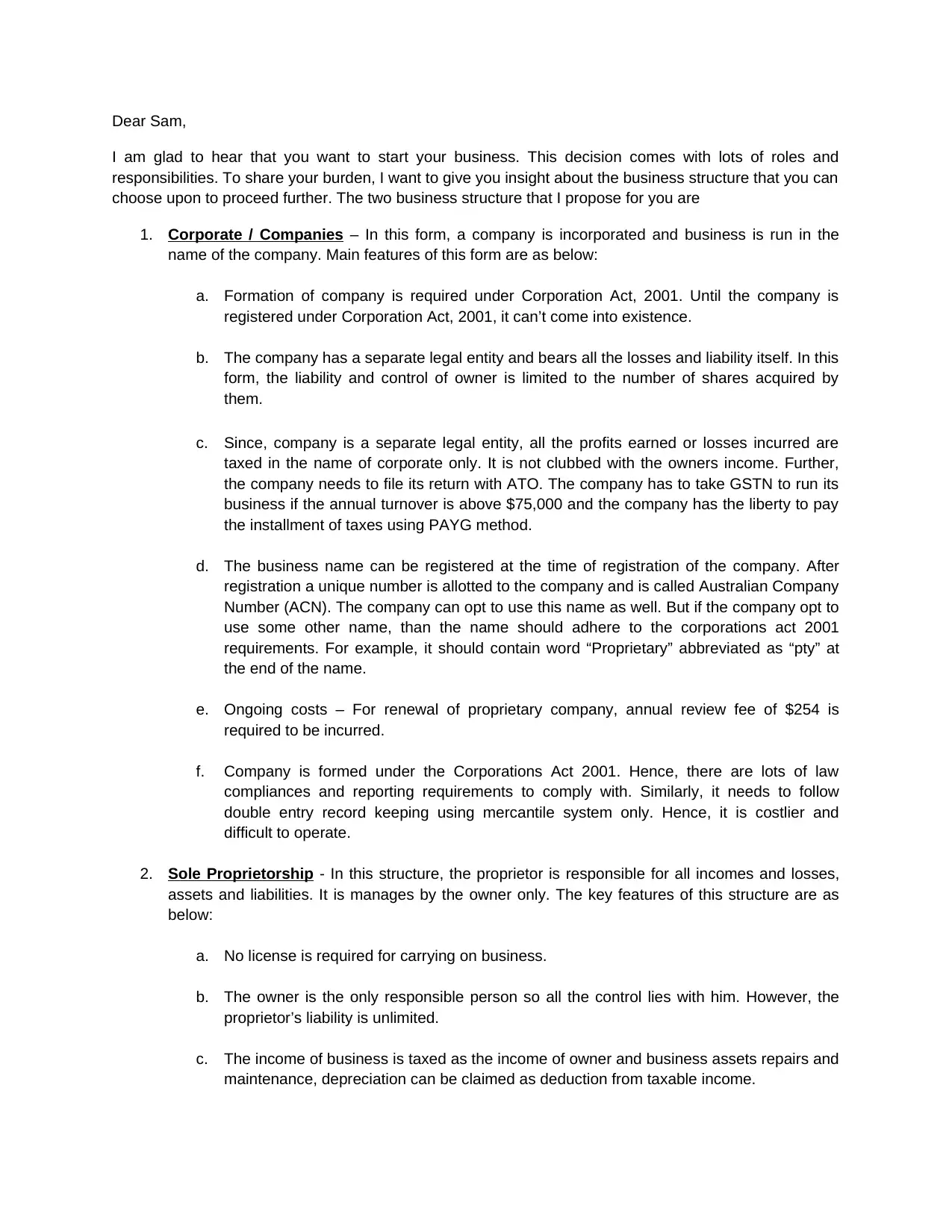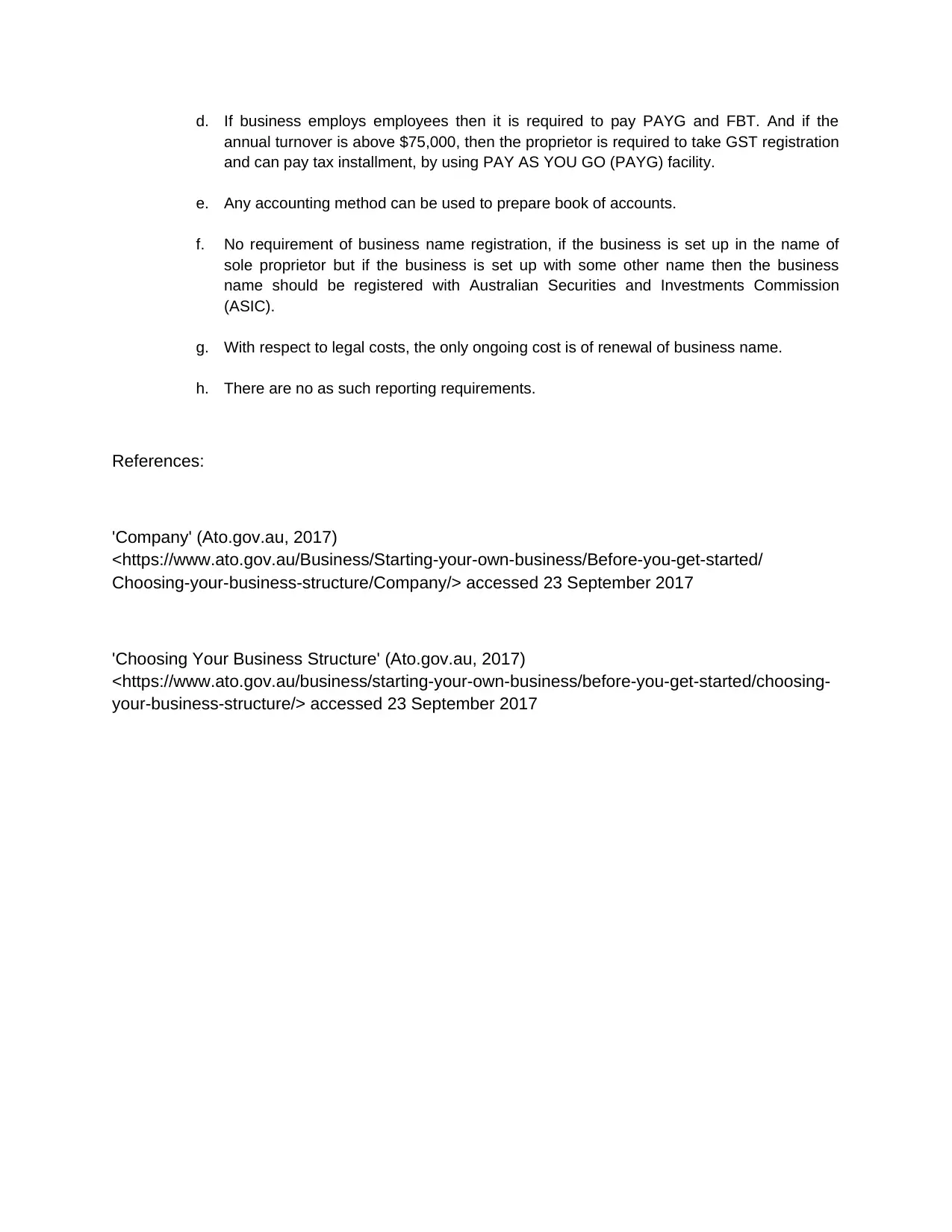Business Structure Analysis: Corporate vs. Sole Proprietorship
VerifiedAdded on 2020/04/07
|2
|672
|177
Homework Assignment
AI Summary
This assignment provides an analysis of two primary business structures: Corporate (Companies) and Sole Proprietorship, offering valuable insights for individuals planning to start a business. The Corporate structure, governed by the Corporations Act 2001, involves incorporation, separate legal entity status, limited liability for owners, and specific taxation and reporting requirements, including GSTN and ACN registration. The Sole Proprietorship structure, on the other hand, is characterized by direct owner responsibility for all aspects of the business, unlimited liability, and simplified accounting. The assignment details key features of both structures, including formation, liability, taxation, reporting obligations, and ongoing costs, providing a comparative framework for making informed decisions about the most suitable business structure. The analysis also references relevant ATO resources for further information.
1 out of 2








![[object Object]](/_next/static/media/star-bottom.7253800d.svg)